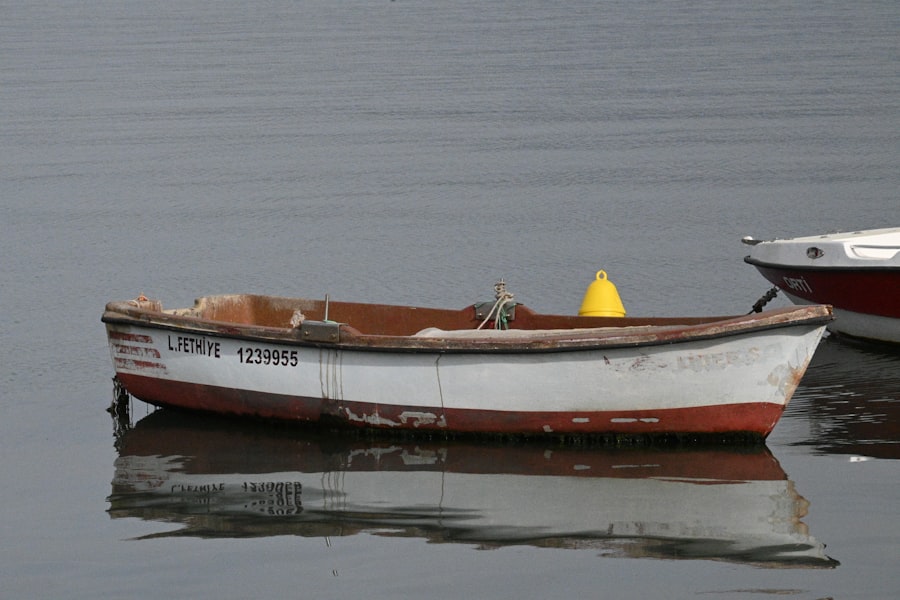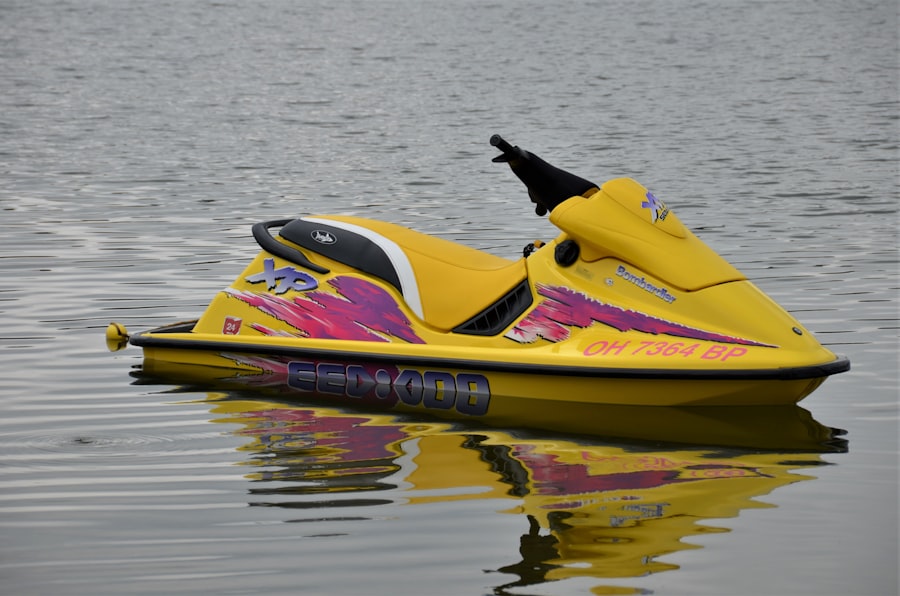Rubber dinghies, often referred to as inflatable boats, have gained immense popularity among water enthusiasts for their versatility and ease of use. When considering the purchase of a rubber dinghy, it is essential to understand the various features and specifications that can significantly impact your experience on the water. One of the primary factors to consider is the intended use of the dinghy.
Are you planning to use it for leisurely paddling on calm lakes, or do you intend to navigate through rougher waters? The design and construction of the dinghy will vary based on its intended purpose, so identifying your needs upfront is crucial. Another important aspect to consider is the type of propulsion system you plan to use.
Some rubber dinghies are designed for rowing, while others can accommodate outboard motors. If you opt for a motorized dinghy, ensure that it has the appropriate transom strength and dimensions to support the engine’s weight and power. Additionally, look for features such as reinforced seams and high-pressure air chambers, which enhance the dinghy’s performance and safety.
Understanding these elements will help you make an informed decision when selecting a rubber dinghy that meets your specific requirements.
Key Takeaways
- Understand key factors to consider when selecting a rubber dinghy, including size, capacity, and intended use.
- Compare materials like PVC and Hypalon to determine the best balance of durability and cost.
- Evaluate durability and longevity features to ensure your dinghy withstands various water conditions.
- Look for essential features and accessories that enhance functionality and convenience.
- Follow proper maintenance and safety guidelines to maximize the lifespan and ensure safe operation.
Choosing the Right Size and Capacity for Your Rubber Dinghy
Selecting the appropriate size and capacity for your rubber dinghy is vital for ensuring comfort and safety during your outings. Dinghies come in various sizes, typically ranging from 8 to 15 feet in length. The size you choose should be influenced by the number of passengers you plan to accommodate and the type of activities you intend to engage in.
For instance, a smaller dinghy may be suitable for solo fishing trips or short excursions, while a larger model would be more appropriate for family outings or group adventures. Capacity is another critical factor to consider. Each dinghy has a specified weight limit that should not be exceeded to maintain stability and performance on the water.
When evaluating capacity, take into account not only the weight of passengers but also any gear or equipment you plan to bring along. It is advisable to choose a dinghy with a capacity that exceeds your estimated total weight to ensure a safe margin. Additionally, consider how the size of the dinghy will affect its maneuverability and storage options, as larger models may require more space both on the water and when not in use.
When it comes to rubber dinghies, the material used in their construction plays a significant role in determining their performance, durability, and overall lifespan. The two most common materials used are PVC (polyvinyl chloride) and Hypalon (chlorosulfonated polyethylene). Each material has its unique characteristics that cater to different needs and preferences.
PVC dinghies are generally more affordable and lightweight, making them an attractive option for casual users or those new to boating. They are easy to transport and store, which is a significant advantage for individuals with limited space. However, PVC is less resistant to UV rays and extreme temperatures compared to Hypalon, which can lead to degradation over time if not properly cared for.
On the other hand, Hypalon dinghies are known for their superior durability and resistance to harsh environmental conditions. They can withstand UV exposure, extreme temperatures, and abrasions much better than their PVC counterparts, making them ideal for serious adventurers who plan to use their dinghies frequently in challenging conditions.
Assessing Durability and Longevity: What to Consider When Buying a Rubber Dinghy

Durability is a paramount consideration when purchasing a rubber dinghy, as it directly impacts how long the craft will last and how well it will perform over time. One of the key indicators of durability is the quality of materials used in construction. As previously mentioned, Hypalon offers superior resistance to environmental factors compared to PVC; however, not all Hypalon dinghies are created equal.
It is essential to research manufacturers and read reviews to ensure you are investing in a high-quality product. Another factor influencing durability is the construction method employed by the manufacturer. Look for dinghies that feature welded seams rather than glued seams, as welded seams provide greater strength and resistance to leaks.
Additionally, consider the thickness of the material; thicker fabrics generally offer better protection against punctures and abrasions. Reinforced areas, such as the transom and floor, are also critical for enhancing durability, especially if you plan on using an outboard motor or carrying heavy loads.
Exploring Features and Accessories: What to Look for in a Rubber Dinghy
| Feature/Accessory | Description | Importance | Typical Metrics | Considerations |
|---|---|---|---|---|
| Material Quality | Type of rubber or PVC used in construction | High | Thickness (mm), Tear resistance (N/mm), UV resistance rating | Durability, resistance to punctures and sun damage |
| Size and Capacity | Dimensions and maximum load capacity | High | Length (ft/m), Width (ft/m), Max weight (kg/lbs), Passenger capacity | Match to intended use and number of passengers |
| Inflation System | Type and number of air chambers and valves | Medium | Number of air chambers, Valve type (Boston, Halkey-Roberts) | Safety redundancy, ease of inflation/deflation |
| Floor Type | Material and design of the dinghy floor | Medium | Floor type (air, aluminum, plywood), Weight (kg/lbs) | Stability, ease of setup, weight considerations |
| Accessories Included | Additional items like oars, pump, repair kit | Medium | Number of accessories, quality ratings | Convenience and readiness for use |
| Portability | Ease of transport and storage | High | Packed size (cm/in), Weight (kg/lbs) | Storage space, transport method |
| Attachment Points | Locations for securing gear or towing | Low | Number of D-rings or cleats | Utility for fishing, towing, or securing |
| Motor Compatibility | Ability to mount an outboard motor | Medium | Max motor horsepower, Transom type | Power needs and motor size limits |
| Safety Features | Built-in safety elements like grab lines | High | Number of grab lines, Reflective strips | Enhanced safety during use |
When selecting a rubber dinghy, it is essential to consider various features and accessories that can enhance your overall experience on the water. One important feature is the type of floor construction. Inflatable floors provide excellent buoyancy and comfort but may lack rigidity compared to hard floors made from plywood or aluminum.
Hard floors offer better stability and performance when navigating rough waters but can add weight to the dinghy. Storage options are another critical consideration. Look for dinghies with built-in storage compartments or D-rings that allow you to secure gear safely while on the water.
Additionally, consider whether you want a dinghy with an inflatable keel for improved tracking and maneuverability or one with a flat bottom for easier beach landings. Accessories such as oars, pumps, and repair kits are also worth considering; some manufacturers offer packages that include these essentials at a discounted rate.
Where to Buy: Finding the Best Deals on Rubber Dinghies
Finding the right rubber dinghy at an affordable price requires some research and comparison shopping. Numerous retailers specialize in marine equipment, both online and in physical stores. Online marketplaces such as Amazon or specialized boating websites often provide extensive selections with customer reviews that can help guide your decision-making process.
Additionally, many manufacturers have their own websites where you can purchase directly from them, sometimes offering exclusive deals or discounts. Local marine supply stores can also be valuable resources for purchasing rubber dinghies. Visiting a store allows you to see the product firsthand, assess its quality, and ask knowledgeable staff any questions you may have about specific models or features.
Furthermore, attending boat shows or outdoor expos can provide opportunities to compare different brands side by side while taking advantage of show discounts or promotional offers.
Maintenance and Care Tips for Your Rubber Dinghy

Proper maintenance is essential for prolonging the life of your rubber dinghy and ensuring it remains safe and functional over time. After each use, it is advisable to rinse your dinghy with fresh water to remove salt, sand, or debris that could cause wear or damage if left unattended. Pay special attention to seams and valves during cleaning; these areas are prone to dirt accumulation that can lead to leaks if not properly maintained.
Storage is another critical aspect of care. When not in use, store your rubber dinghy in a cool, dry place away from direct sunlight to prevent UV damage. If possible, deflate the dinghy before storing it; this will reduce stress on seams and materials over time.
Regularly inspect your dinghy for signs of wear or damage, such as punctures or leaks, and address any issues promptly with appropriate repair kits designed for your specific material type.
Safety Considerations: Ensuring a Safe and Enjoyable Experience with Your Rubber Dinghy
Safety should always be a top priority when using a rubber dinghy. Before heading out on the water, ensure that everyone on board is wearing appropriate personal flotation devices (PFDs) that meet safety regulations for your region. Familiarize yourself with local boating laws and regulations regarding required safety equipment, such as flares or whistles.
Additionally, it is crucial to assess weather conditions before embarking on your journey. Sudden changes in weather can create hazardous situations on the water; therefore, always check forecasts and be prepared to return if conditions worsen. Carrying essential safety gear such as a first aid kit, signaling devices, and extra paddles can also enhance safety during your outings.
By taking these precautions seriously, you can ensure that your experiences with your rubber dinghy are both enjoyable and secure.


